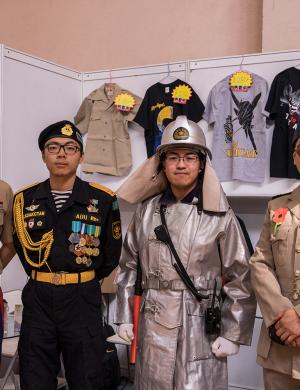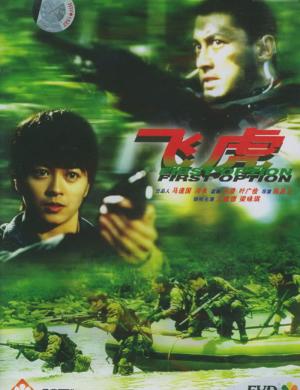一个被遗忘了的东西——海军陆战队实验背心:MSV
此MSV非MSV
昨天在群里几个小朋友发了两张一名陆战队员身着一件第一次见到的背心。然后就在群了争论是什么背心。是不是陆战队新装备背心了 。整了一晚上,今天早上来说这是ISPC。我就产生了疑惑。

然后下午抽时间找了下资料。和各位玩家分享下。
这款背心并不是什么陆战队装备的新背心,也不是什么ISPC 而是2013年6月陆战队为下一代背心做的一个实验性产品。
背心名称为MSV,整体是结合了IMTV 和IMTV PC的属性,在加以改进。

实验背心为了使得下一代背心更加适合各种体型身高的陆战队员,提高背心的舒适度和承载能力。


这个背心最吸引我的是这个背后类似外骨骼的部位。不过由于找到的资料有限,不知道具体是什么功能。
也希望有更多资料的玩家可以补充。
下面是对图片背景介绍的原文资料,有兴趣的可以看看。
June 20, 2013 --
By Monique Randolph, MCSC Corporate Communications
Marines come in all sizes—big, small, short and tall—sowhen it comes to Marine Corps body armor, a one-size-fits-all approach is notthe answer. Marine Corps Systems Command’s Individual Armor team understandsthat and is doing its best to accommodate Marines of all sizes and keep themsafe on the battlefield.
Sizing for body armor is based on the “fifth toninety-fifth” percentile of Marines, which means the current sizes fit about 90percent of the men and women in the Marine Corps, said Maj. James Pelland,Individual Armor Team lead. The team saw an opportunity to accommodate theportion of Marines who found the traditional sizing was not a comfortablefit—especially in the Improved Modular Tactical Vest.
“Based on our latest measurements of a large populationset of the Marine Corps, we saw that additional sizes would benefit [smallerstature] Marines,” Pelland said. “If something is made to fit you better, youdon’t have to expend extra energy struggling with it. Energy loss equates tofatigue, less functionality and less lethality. We believe in increasing Marinemobility and performance. That’s what we’re focused on.”
Although the data provided insight into the sizing issue,Pelland said the team—part of Infantry Weapon Systems’ Infantry CombatEquipment product management office—also needed to know what Marines thoughtabout the armor. In the spring, the team conducted a web-based survey to pollMarines for ideas about how to improve the fit of existing body armor andinnovations for the next generation.
“We didn’t stop there,” Pelland said. “We also conductedan attribute workshop with Marines at Camp Pendleton—includingsmaller stature male and female Marines. They confirmed what we thought—itwasn’t as much a male-female issue as a stature issue that’s related to thelength of the torso.”
As a result of the findings, MCSC will procure nearly3,800 IMTVs in sizes small-short, medium-short and large-short later thisyear—enough to outfit smaller stature Marines for the remainder of operationsinAfghanistan.
The Next Generation of Body Armor
As part of the same workshop in May, the armor team alsohad Marines try four prototypes of the next generation body armor, the ModularScalable Vest, and provide feedback on the designs.
“Right now, Marines go to war with a multiple-veststrategy,” Pelland said. “Commanders have to choose which vest their Marineswill wear based on the situation on the ground.”
Marines inAfghanistancurrently have a choicebetween the IMTV, fielded in 2011, and the newest body armor vest, the PlateCarrier, which is still being fielded. The IMTV provides more protection thanthe PC, which is lighter, cooler, less restrictive and more frequently worn byMarines in the field.
“So we set outabout a year and half ago to develop a single modular, scalable vest thatbuilds from the plate carrier all the way up to the IMTV,” Pelland said,"This gives commanders more choices in terms of armor protection levels tobetter adjust to the mission at hand.”
The modular, scalable vest, or MSV, will combineattributes from the IMTV and PC, and allow Marines to attach and detachcomponents based on their needs. It is being developed by the armor team and iscurrently in the design review phase.
The team is working closely with engineers from theArmy’s Natick Soldier Research, Development and Engineering Centerand designers from the Navy’s Clothing and Textile Research Facility to makecorrections and refinements to the vest. Pelland’s team also meets monthly withthe Army’s Soldier Protective Equipment Program Management Office where bothgroups share information and design ideas.
Another innovative concept for the MSV is the addition ofa central load management and distribution system—modeled after the humanspine—that is inserted into the back of the vest to help more evenly distributethe weight Marines carry from their shoulders to their hips.
“Body armor alone can weigh 30 to 50 pounds; even morewhen Marines attach a combat load—grenades, magazines filled with ammunition,etc.,” Pelland said. “So, we’ve developed prototype [load distribution] systemsthat are now being tested in a lab. We’re hoping a smart load management systemwill effectively reduce the energy expenditure, and risk of fatigue andinjury.”
A research and development effort is also underway toproduce plates—the small arms protective inserts for the vest—with the same orless weight as the existing plates, but with increased performance, Pellandsaid. The vest will also include an improved quick-release feature so Marinescan shed the gear quickly, if necessary. MCSC plans to procure the MSV in thenext two years.
“Sizing and fitwill be critical considerations for the MSV as well,” Pelland said. “It maymean developing new sizes for the vest and possibly the plates, but our overallgoal is to size the MSV and its components in order to give Marines both themobility and protection they need.”
The Best is Yet to Come
The idea in the future is to design all the gear andequipment a Marine wears and carries–body armor, weapons, communicationsequipment, power sources, etc.—as a system, Pelland said. The concept, calledModular Scalable Protective System, was developed more than a year ago and is acombined initiative including MCSC, Combat Development and Integration, MarineCorps Operational Test and Evaluation Activity, Marine Corps IntelligenceAgency, the Army, and other government and industry stakeholders.
“All the program and product offices at Marine CorpsSystems Command integrate and form a system that supports the Marine,” he said.“The whole is stronger than its individual parts. That’s the idea behind MSPS.”
MCSC serves as the Department of the Navy’s systemscommand for Marine Corps ground weapon and information technology systemprograms. It is also the Marine Corps commandant's agent for acquisition andsustainment of systems and equipment used to accomplish the warfightingmission.
The MSPS concept supports that mission. It is anopportunity for increased collaboration, integration and communication, Pellandsaid. It encourages the acquisition community to use logical relationshipsbetween certain pieces of gear to make the best decisions when equippingMarines.
“Marines carry our decisions; what we build goes directlyon their skin,” he said. “I believe in [making the load] lighter. But, Ibelieve we can do so through a ‘system of systems approach,’ affecting theweight at the requirement [stage]. We can smartly group certain pieces of gearthe Marine has to carry, and design them together as a system. I believe that’swhere we’re going to get true weight savings... and also where we’re going toget unbelievable interoperability. We’re not quite there yet, but just wait.There is much more to come.”w











